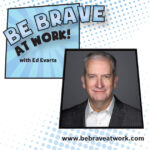As you work to raise your visibility in your organization and industry, visibility is comprised of presence (the tangible ways that individuals connect with you) and reputation (the intangible ways that individuals connect with you). Similarly, accessibility has tangible and intangible characteristics.
Tangible Accessibility
Ensure your colleagues know where your office or workstation is located. Some corporate offices are like labyrinths and finding your office may not be as easy as it sounds. Concurrently, some corporate offices have “cubicle farms” – dozens and dozens of similarly looking workstations that abut one another. Your colleagues could go insane trying to find your location. Rather than confirm that mental health is covered under your organization’s insurance plan, make sure that your colleagues know where your office or workstation is located.
Ensure your colleagues know the hours that you work. In today’s busy and fast-paced organizations, you may have non-standard schedules, either to fit the needs of the business or to respond to personal needs. You may work Tuesday through Saturday, or work a ½ day on Wednesdays, or Fridays off. Regardless of your schedule, make sure that your colleagues know your days and hours of work.
Ensure your colleagues know your contact information. Sometimes your colleagues are unable to access you as your colleagues simply do not have your email address, office phone number extension, or cellphone number. Many corporate switchboards are now automated; and if your colleagues do not know your extension number or how to spell your name in the “dial-by-name” directory, finding you can become frustrating. Make sure that your colleagues have your contact information for easy access to you.
Ensure your colleagues know when you are not accessible. As important as it is to create access, it is equally important to ensure that your colleagues know when you are not accessible. You may be out of the office at a meeting, traveling, ill, or, on a rare occasion, enjoying a personal day. Make sure that your colleagues know when you are not available, whom your colleagues can contact during your absence, and when you will return to your office. For example, you can create the following “out-of-office” email that your colleagues will automatically receive until you are back in the office.
“I am currently out of the office, returning next Thursday, January 22nd. If your need is urgent, please contact Susan Jones at 555-555-5555. If you are able to wait, I will begin returning emails when I return to the office. Thank you in advance for your patience.”
My next blog will focus on intangible accessibility. Stay tuned for more!






